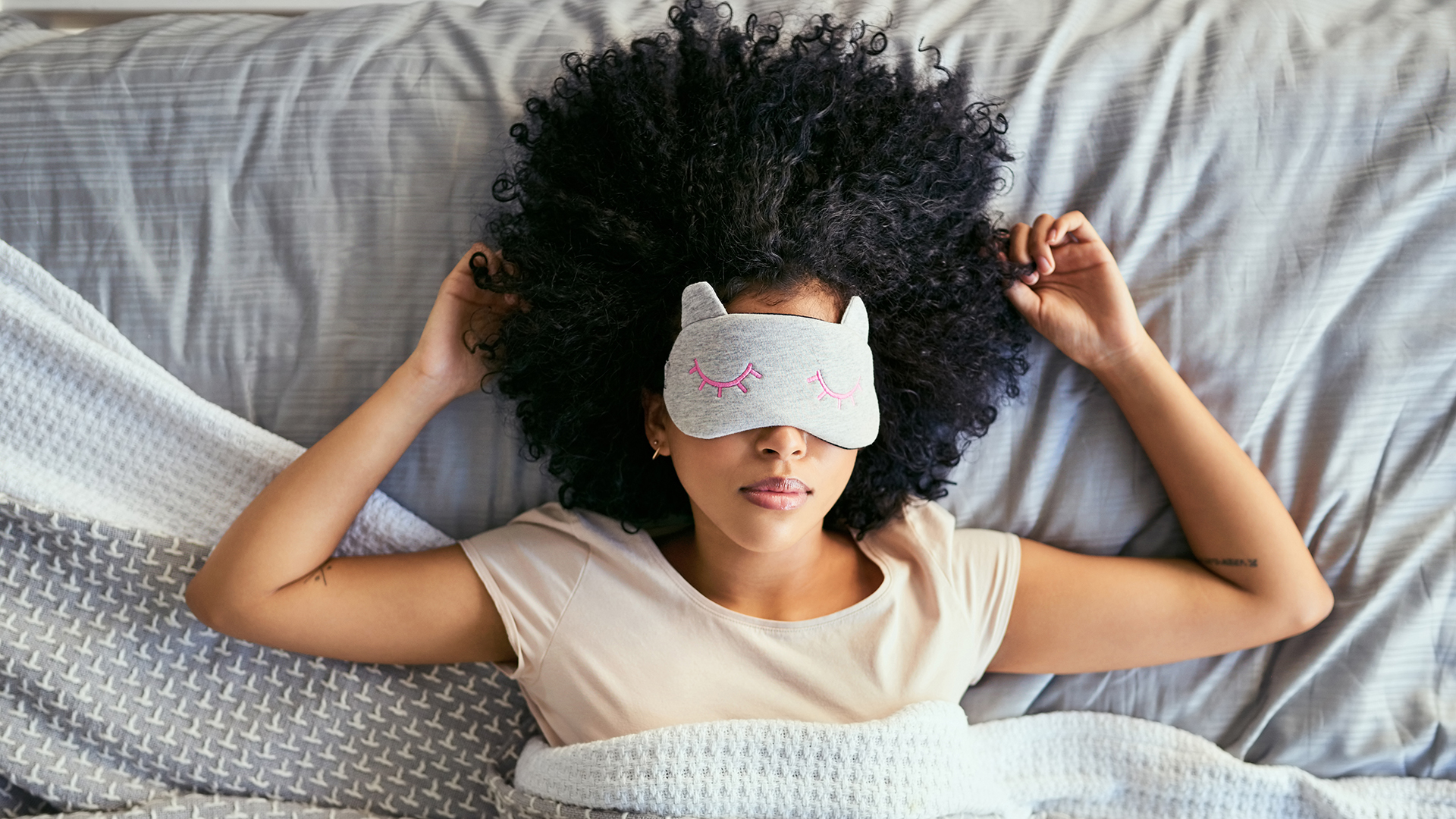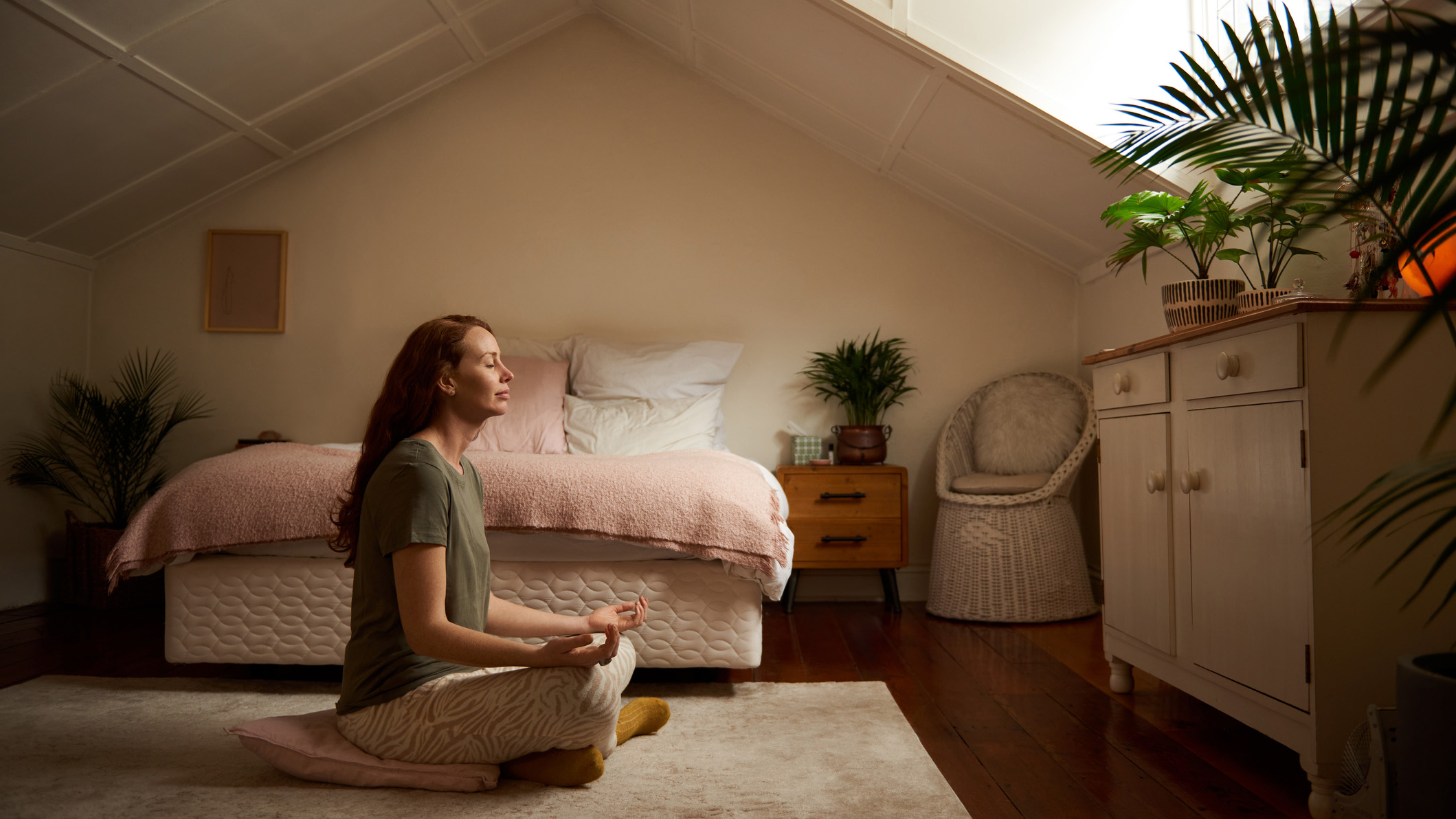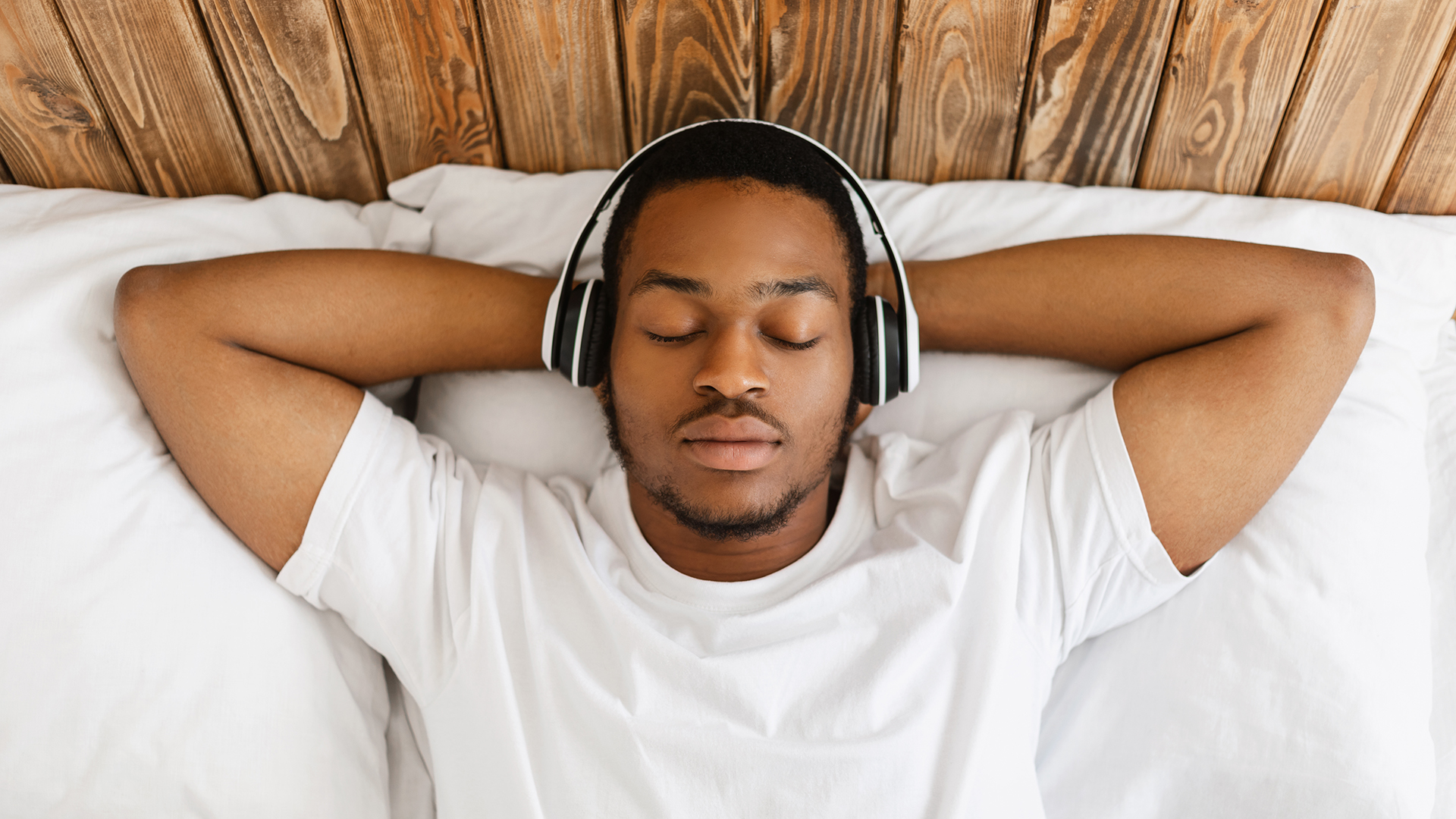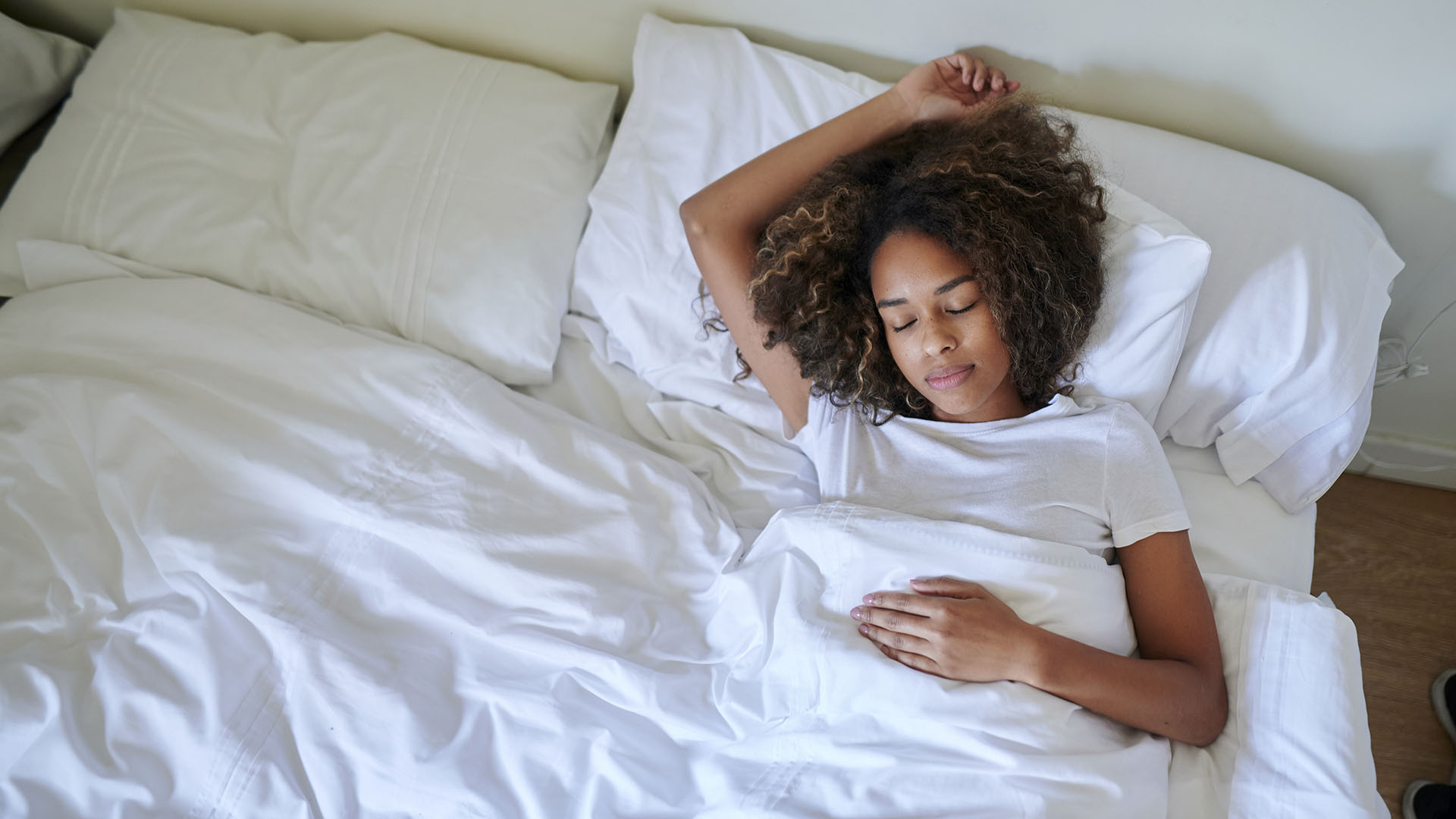
A good night's sleep is vital for our wellbeing, but for many of us, too much of the night is spent staring at ceiling, willing ourselves to drift off. If you're having trouble sleeping, relaxation techniques can be an effective method to help you fall asleep faster.
Our team of expert sleep writers have tried numerous relaxation methods in our quest to find the perfect night's sleep. The choices below are our pick of the bunch, tried and tested sleep techniques that we've found successful at aiding rest.
Relaxation techniques should be used alongside a good pre-bed routine and a healthy sleep environment — including the best mattress for your sleep style. Let's explore our hand-picked methods to help you fall asleep fast, how to use them, and just how long it should be taking you to drift off.
How to fall asleep fast — 5 tried and tested techniques
There are a lot of methods out there that claim to help you fall asleep fast, and it can be hard to separate the wheat from the chaff. The techniques outlined below have been tried and tested by our wider sleep team and have proven effective at helping us fall asleep faster.
1. The 4-7-8 method

What it is: The 4-7-8 method is a simple breathing technique that encourages controlled breath work as a way to reduce stress and anxiety. This accessible method recently found a wealth of new followers due to its TikTok popularity.
By focusing on the steady rhythm of your breath, you can redirect a racing brain into a calmer headspace. Similar breathing techniques include moon breathing and belly breathing.
How to use it: One of the simplest breathing techniques around, the 4-7-8 method is easy to learn. To begin, get into a comfortable position that will allow you to focus on your breath, and exhale. Then, follow these three steps:
1. Inhale through the nose for four seconds.
2. Hold the breath for seven seconds.
3. Breathe out for eight seconds.
Repeat this cycle three to four times, maintaining the focus on the breath. If your mind starts to wander, redirect your thoughts back toward your breathing. Practice is encouraged, so aim to incorporate the routine into your day, particularly when you might be feeling stressed or overwhelmed.
2. Guided sleep meditation

What it is: Deep sleep meditations use soothing words and tones to guide the user through a series of easy steps. Each step sends the user deeper into a relaxed state, encouraging them to let go of daily stresses while focusing on being present in their breath and body. These instructions are often accompanied by relaxing music and even imagery (but other meditations encourage you to keep your eyes closed).
As the meditation continues, the user should begin to feel the day's responsibilities fade away. You should also notice physical effects such as slower breathing and a lower heart rate.
How to use it: The first step in guided sleep meditation is actually finding a meditation to follow. There a lot of options out there, each with various lengths, techniques, and aims. Play around to find what you like — members of our sleep team have had success with YouTube guided sleep meditations, but what works for us might not work for you. Once you've found a meditation you like, follow these steps:
1. Get comfortable in bed, so you can sleep as soon as you're ready.
2. Queue up your meditation, press play, and settle back under the covers.
3. Follow the guidance of your instructor until you're ready for sleep.
4. In the morning, assess how well you slept and the effectiveness of the meditation.
If you were unhappy with the results, try using a different meditation next time. Play around with the length: some people prefer an hour to help them relax, others a few minutes similar to sleep hypnosis.
3. Military sleep method

What it is: Developed to help soldiers sleep better in combat environments, the military sleep method uses a body scan technique to induce calm. Regular repetition is important to feel all the benefits of the military sleep method, but as it was created to be used in even adverse circumstances, it's an easy exercise to practice.
The military sleep method encourages users to focus on relaxing the muscles in the body, before moving onto visualization. As muscle tension eases, the parasympathetic nervous system kicks into action, encouraging rest and sleep.
How to use it: Working from head to toe, the military sleep method passes down the body, relaxing muscles along the way. The first step is to get into a comfortable position where your body isn't put under stress. When you're ready to relax, complete these steps:
1. Relax the jaw, tongue, and face muscles.
2. Drop your shoulders as far as they'll go.
3. Exhale deeply and release tension from your chest.
4. Relax the muscles in your legs and feet.
5. Imagine a warm sensation traveling from the top of your head to your toes.
6. Inhale and exhale, clearing your mind as you breathe out.
7. Visualize yourself either lying in a canoe on a calm lake and watching the clear sky above, or nestled in a black velvet hammock in a pitch black room.
8. If your mind wanders, repeat 'don't think' for 10 seconds, then return to the visualization.
Don't expect to use the military sleep method once and fall asleep instantly — even its biggest supporters agree it takes a few weeks to see results. But if you keep it up and use it nightly, this can cut the time it takes you to fall asleep down by minutes.
4. The body scan meditation technique

What it is: A form of self-guided meditation, the body scan technique works by methodically focusing on calming each part of the body. Starting from the head, the user shifts attention from one body part to the other, letting go of tension while also releasing stressful thoughts.
How to use it: Using the body scan technique requires a deep connection with the body, so you need to be in a place where you can stretch out — the bed is perfect. Once comfortable, take a few deep breaths, paying attention to the rhythms of your breathing, before diving into the exercise properly:
1. From the top of your head down, scan your face for tension, releasing stresses as you exhale and keeping the focus on your breath and body.
2. Move through the rest of the body, letting go of tension and softening the muscles as you go. Work slowly and move intuitively, until the entire body has been scanned and you're feeling relaxed.
3. If anxious or disruptive thoughts appear, let them pass before gently redirecting your attention to the body.
With practice, you should develop a body scan technique that feels intuitive, while become better at redirecting your thoughts back towards your body.
5. 10-3-2-1-0 sleep rule

What it is: While the other methods in this list take a more immediate approach to falling asleep, the 10-3-2-1-0 rule primarily encourages small lifestyle changes geared towards healthier rest.
The steps outlined in this method are designed to alter bad habits that might be keeping you awake. These habits are ingrained into our daily routine, so much so that we hardly notice the effect they have on our sleep. With the 10-3-2-1-0 method you can identify and change these problem areas, for faster sleep every night.
How to use it: The 10-3-2-1-0 method does require some commitment, and the steps can seem unachievable at first. Each number represents a change, and it goes like this:
1. 10 hours before bed, cut out caffeine.
2. 3 hours before bed, limit food and drink.
3. 2 hours before bed, stop working.
4. 1 hour before bed, no more screen time.
5. In the morning, don't press snooze.
If that all seems like a lot, try tackling it a step at a time, and slowly introduce new rules. Even if you can't follow every guideline every night, the good habits instilled by the 10-3-2-1-0 rule should soon have you falling asleep faster.
How long should it take to fall asleep?
Sleep latency describes the time it takes to fall asleep once you're in bed, and for the average adult, it typically takes between seven to thirty minutes. If you're at the higher end of the average — around twenty to thirty minutes — the methods above can all be used to help you fall asleep fast.
While the occasional night spent tossing and turning isn't necessarily cause for alarm, if it regular takes you longer than 30 minutes to drift off, consider speaking to a doctor. They can help you find ways to improve your sleep hygiene so slumber comes easier.
A long sleep onset latency is an issue, but sleeping straight away isn't always a good thing, either. There's no technique that can make you fall asleep in 10 seconds, and if you're snoozing as soon as your head hits the pillow, this is likely a sign of sleep deprivation. You might be falling asleep fast, but once asleep, you aren't getting the rest your body needs.
Sleep is a complex process and these tips and techniques should be used as part of a soothing nighttime routine and alongside a supportive sleep environment. Check out our guide to the best hybrid mattresses and best memory foam mattresses to find a bed that helps you let go of the day and sink into dreamland.







